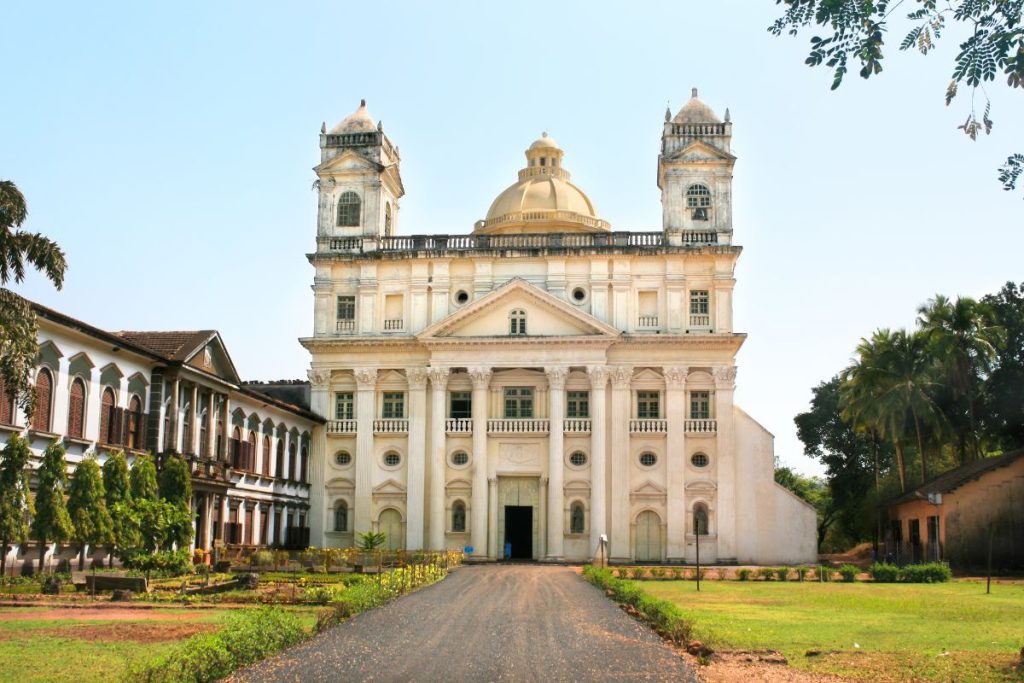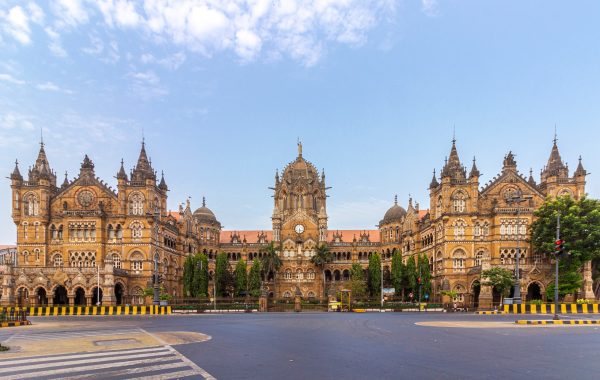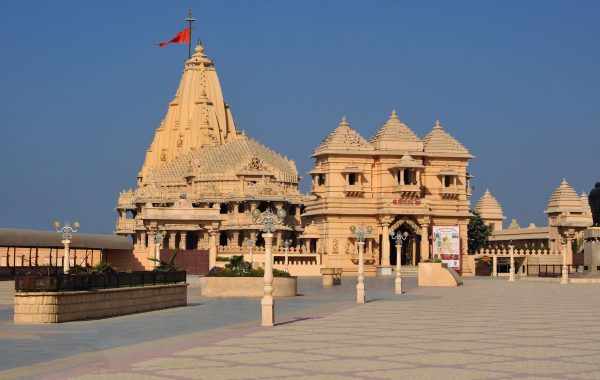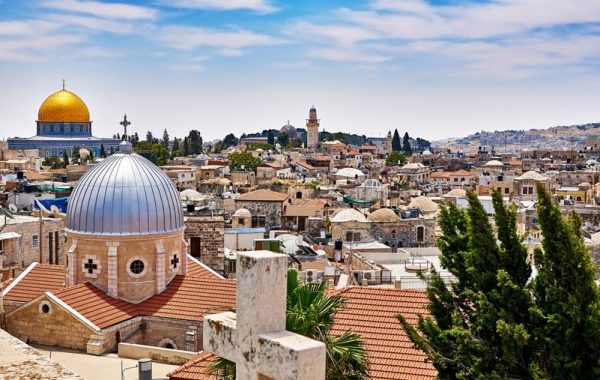Explore Goa’s rich cultural heritage with these 7 UNESCO World Heritage Sites that showcase the state’s fascinating history, architecture, and traditions.
Nestled on the western coast of India, Goa is renowned for its sun-kissed beaches, vibrant nightlife, and rich Portuguese heritage. Beyond its reputation as a party destination, Goa also harbors a spiritual side that beckons seekers of inner peace and enlightenment. Amidst the lively beaches and bustling markets, there exist serene and sacred spaces that serve as sanctuaries for those on a spiritual quest.
Here is a look at the must-visit spiritual spots in Goa which are also UNESCO Heritage sites and bear testament to its rich heritage, spanning centuries of history, spirituality, and architectural marvels.
Se Cathedral
Se Cathedral, constructed in the 16th century to commemorate the Portuguese victory in Goa, is dedicated to Saint Catherine of Alexandria from present-day Egypt. Having embraced Christianity at the tender age of 14, she went on to convert hundreds before meeting martyrdom at 18 under the rule of the then emperor. The cathedral’s dedication to her is rooted in historical synchronicity, as the day of its construction coincided with the Feast of St. Catherine, marking the victorious day when Portuguese General Afonso de Albuquerque conquered Goa on November 25th, defeating Adil Shah. Functioning as the seat of the Roman Catholic Metropolitan Archdiocese of Goa and Daman, the Se Cathedral overlooks the Mandovi River, situated opposite the Church of St. Cajetan, earning its place as a UNESCO World Heritage Site. The vast expanse of the grounds features meticulously manicured lawns, offering a serene ambiance. Behind the cathedral stands the Archbishop’s Palace, though it is no longer in use.
Also Read: 12 Food Souvenirs To Bring Back From Panaji, Goa
The structure carries a unique asymmetry due to the collapse of one of its towers in the 18th century, a feature left unreconstructed. Greeting visitors at the entrance is a towering statue of Jesus Christ with open arms. Inside, the cathedral houses eight chapels and six altars along its aisles, with the main altar dedicated to Saint Catherine of Alexandria. Notably, the Se Cathedral is home to the largest church bell in the state, its resonant peals echoing at regular intervals, adding to the spiritual aura of this historic landmark.
Basilica of Bom Jesus
The distinctive structure of the Basilica of Bom Jesus, crafted from the identifiable red laterite stone and marked by its characteristic lack of lime-plastered exteriors, stands out as the focal point of Old Goa. What sets the Basilica of Bom Jesus apart, making it one of the UNESCO World Heritage Sites in Old Goa, is its role as the final resting place for the mortal remains of St. Francis Xavier, housed within a modest chapel. This makes it a deeply revered pilgrimage site. Adjacent to this narrow chapel, the church also showcases his coffin for public viewing. Additionally, an annual feast, held on the 3rd of December, adds a special significance to the site, drawing devotees and visitors alike to partake in the commemorations.

St Catherine’s Chapel
Yet another UNESCO World Heritage Site in Old Goa, this small and elegant chapel, though mostly non-operational, holds immense historical significance in the context of Portuguese history in India. Positioned gracefully along the Mandovi River, it is conveniently located just a brief stroll away from the Archaeological Museum and Portrait Gallery. Diverging from the prevalent trend of pure white structures in Goa, this chapel distinguishes itself with a façade adorned in shades of brown and white. Visitors will find it intriguing that the Se Cathedral, the Church of St. Francis of Assisi, the Archaeological Museum and Portrait Gallery, and the Chapel of St. Catherine are all arranged in sequence from east to west within the same compound, diligently maintained by the Archaeological Survey of India (ASI).
Church of St Francis de Assisi and Convent
In the year 1517, a group of eight Portuguese friars arrived in Goa and established the Chapel of St. Francis of Assisi, along with an adjoining convent to the west of the Se Cathedral, another UNESCO World Heritage Site. Over the course of four years, the chapel underwent a transformation into a fully-fledged church and was consecrated in 1602. The current structure, featuring Baroque interiors, was reconstructed in 1661. Dedicated to St. Francis of Assisi, the patron saint of Italy and protector of animals and the natural environment, the church observes a special ceremony on his feast day, the 4th of October each year, where blessings are extended to animals. In 1964, the Archaeological Survey of India (ASI) repurposed the adjacent convent into the Archaeological Museum and Portrait Gallery. This museum, housing various artifacts and sculptures, includes a towering statue of the Portuguese general Afonso de Albuquerque, instrumental in the conquest of Goa from its former Muslim ruler. Admission to the museum is free for children under 15.
Church of Our Lady of Rosary
Located on the Holy Hill and connected by a narrow access road with the Museum of Christian Art, the Church of Our Lady of Rosary showcases a distinctive Manueline architectural style. Constructed in the mid-16th century, this is Goa’s oldest surviving church, distinguished by its elevated windows and circular towers that evoke a fortress-like aesthetic. Remarkably beautiful in its austerity and simplicity, this church stands as one of the few structures in Goa that bears witness to the introduction of Renaissance architecture brought by the Portuguese. Despite its apparent simplicity, the building, featuring two chapels and three altars, gazes over the Mandovi River, observing the multitude of vessels navigating its waters. The surrounding compound is thoughtfully landscaped with lawns, shrubs, and trees. This church holds a coveted spot among the UNESCO World Heritage Sites in Old Goa.

Ruins of the Church of St. Augustine
The remnants of St. Augustine’s tower stand as a prominent UNESCO heritage site, once part of one of the largest churches in its prime. What remains now is solely the tower, a poignant reminder of the former grandeur of this structure. Erected by the Augustine order and consecrated to Our Lady of Grace, construction commenced in 1597 and concluded in 1602. Comprising four storeys, the standing tower is constructed from laterite. Regrettably, after the expulsion of the Augustinians in 1835, the church faced abandonment, eventually succumbing to decay and ruin. The tower now stands alone, preserving the echoes of a bygone era.
Church of St Cajetan
As you navigate through Old Goa towards the Arch of the Viceroy, the Church of St. Cajetan graces your right, northeast of the Se Cathedral. Initially consecrated to Our Lady of Divine Providence, this church was constructed by the Order of Theatines in the year 1665. Its hemispherical dome mirrors the architectural style of the Basilica of St. Peter in Rome. The interior, elegantly designed in the form of a Grecian cross, houses seven altars. The main altar is dedicated to Our Lady of Divine Providence, also known as Mother Mary. Upon leaving the intricately adorned structure, the convent of St. Cajetan greets you on the right, now repurposed to accommodate the Pastoral Institute, surrounded by well-maintained green landscapes.
Goa’s UNESCO World Heritage Sites offer a journey through time, culture, and spirituality. Beyond the beaches and parties, these heritage sites invite travelers to explore the depths of Goa’s soul, providing a profound and enriching experience for those seeking a connection with the past and a deeper understanding of the cultural mosaic that is Goa.
For latest travel news and updates, food and drink journeys, restaurant features, and more, like us on Facebook or follow us on Instagram. Read more on Travel and Food Network
Trending on TFN
A Spanish Odyssey: Trafalgar’s Unparalleled Best of Spain Itinerary
Imperial Splendors: Trafalgar’s 10-Day Sojourn in Prague, Vienna, and Budapest




















